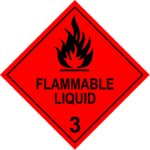What are Dangerous Goods?
Dangerous goods are articles or substances which are capable of posing a hazard to health, safety, property or the environment and which are shown in the list of dangerous goods in the various Regulations (Air, Sea, Road & Rail) or which are classified according to those Regulations. Click on the section to learn more about the dangerous goods class.
It is the responsibility of the shipper to ensure DG’s are correctly declared, packed and labelled with the right DG documentation.
When in doubt whether a shipment is dangerous or not, ask the manufacturer or supplier for a Safety Data Sheet (SDS). Section 14 ‘Transport Information’ will indicate if your shipment contains dangerous goods or not.
The quantity and the mode of transport to be used are, amongst other things, of importance to determine packing and shipping options.
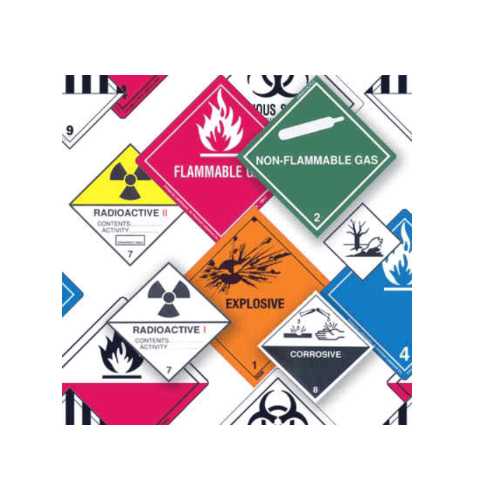
Dangerous Goods Classes
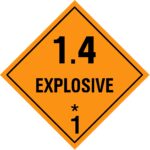
Class 1 Explosives consists of:
- explosive substances (a substance which is not itself an explosive but which can form an explosive atmosphere of gas, vapour or dust is not included in Class 1), except those that are too dangerous to transport or those where the predominant hazard is appropriate to another class;
- explosive articles, except devices containing explosive substances in such quantity or of such a character that their inadvertent or accidental ignition or initiation, during transport, will not cause any effect external to the device either by projection, fire, smoke, heat or loud noise; and
- articles and substances not mentioned under (1) and (2) above which are manufactured with a view to producing a practical explosive or pyrotechnic effect.
Explosives articles and substances are divided into six divisions and into one of thirteen compatibility groups.
Examples: flares, fireworks, ammunition, power tool cartridges and fire extinguisher cartridges.
A gas is a substance which:
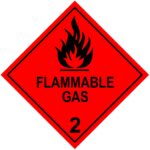
(a) at 50°C has a vapour pressure greater than 300 kPa (3.0 bar); or
(b) is completely gaseous at 20°C at a standard pressure of 101.3 kPa (1.01 bar).
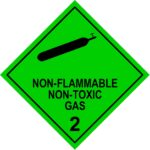
Gases can be transported:
- Compressed.
- Liquefied.
- Refrigerated liquefied.
- Dissolved.
- Adsorbed.
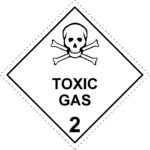
Gases are divided into three divisions, according to the primary hazard during transport:
- Division 2.1 Flammable Gas
- Division 2.2 Non-Flammable Non-Toxic Gas
- Division 2.3 Toxic Gas
Examples:
Division 2.1 Flammable gas: Butane, Hydrogen, Propane, Acetylene, Lighters, Aerosols
Division 2,2 NF-NT gas: Carbon dioxide, Neon, Fire Extinguisher, liquefied Nitrogen or Helium, Aerosols
Division 2.3 Toxic gas: aerosols of low toxicity, tear gas devices.
Class 3 includes the following substances:
Flammable liquids are those (including liquids which have solids in solution or suspension) which give off a flammable vapour at temperatures of not more than 60 °C (closed-cup test) or 65.5 °C (open-cup test).
Liquid desensitized explosives are explosive substances which are dissolved or suspended in water or other liquid substances, to form a homogeneous liquid mixture to suppress their explosive properties.
Examples: paint, thinners, nail polish, methylated spirits, alcohol, certain hand sanitisers, adhesives, acetone, ethanol & ethanol solutions.
Class 4 is divided into 3 Divisions:
- 4.1 Flammable Solids
- 4.2 Substances Liable to Spontaneous Combustion
- 4.3 Substances which, in Contact with Water, Emit Flammable Gases (Dangerous when wet)
4.1 Flammable Solids: 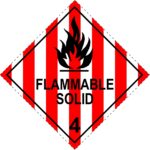
any solid material which, under conditions encountered in transport, is readily combustible, or may cause or contribute to fire through friction, self-reactive substances and polymerizing substances which are liable to undergo a strongly exothermic reaction; desensitized explosives which may explode if not diluted sufficiently.
Examples: Matches, alcohol-based wipes, fire starters, Sulphur, Celluloid.
4.2 Substances Liable to Spontaneous Combustion: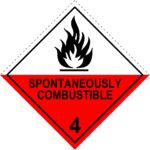
Substances liable to spontaneous combustion. Substances, which are liable to spontaneous heating under normal conditions encountered in transport, or to heating up in contact with air and being then liable to catch fire. The following types of substances are classified in Division 4.2: pyrophoric substances and self-heating substances.
Examples: White or Yellow phosphorus, Magnesium diamide.
4.3 Substances which, in Contact with Water, Emit Flammable Gases: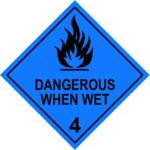
Also known as “Dangerous when wet”. Substances which, by interaction with water, are liable to become spontaneously flammable or to give off flammable gases in dangerous quantities.
Examples: Calcium carbide, sodium, lithium
Class 5 is divided into 2 Divisions:
- 5.1 Oxidizing Substances
- 5.2 Organic Peroxides
5.1 Oxidizing Substances: 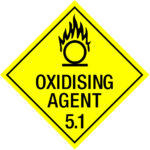
a substance that yields oxygen readily to stimulate the combustion of other material.
Examples: Ammonium nitrate fertilizer, calcium chlorate, bleaches.
5.2 Organic Peroxides: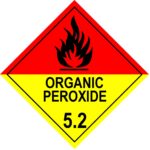
An organic material (liquid or solid) that can be ignited readily by external flame and then burns with an accelerating rate; some substances react dangerously with others.
Examples: tert-Butyl hydroperoxide. Lists of currently assigned organic peroxides can be found in the various dangerous goods regulations.
Class 6 is divided into two divisions:
- Division 6.1—Toxic substances.
- Division 6.2—Infectious substances.
Division 6.1 Toxic substances: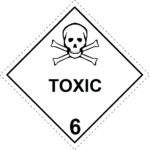
A Toxic substance is a liquid or solid that is liable either to cause death or serious injury or to harm human health if swallowed or inhaled, or by skin contact.
Examples: pesticides, nicotine, cyanide.
Division 6.2 Infectious substances: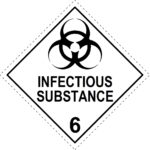
Infectious substances are those substances known to contain, or reasonably expected to contain, pathogens. Pathogens are micro-organisms, including bacteria, viruses, rickettsia, parasites and fungi, and other agents such as prions, which can cause disease in humans or animals.
Infectious substances are divided into two categories:
- Category A
- Category B
Examples: Virus, Bacteria, such as HIV (AIDS), Rabies, some diagnostic specimens and Medical and Clinical waste.
For the purpose of the transport regulations, Class 7 radioactive materials are articles or substances which spontaneously and continuously emit certain types of radiation (ionizing radiation) which can be harmful to health, but which, nevertheless, cannot be detected by any of the human senses (sight, hearing, smell, touch); this radiation can also affect other materials, particularly undeveloped photographic film and undeveloped X-ray film)—and can be detected, and also measured, with appropriate instruments. It should be noted that appropriate instruments can detect and measure levels of radiation which are far below those which significantly affect health.
Class 7 radioactive material packages are classified into the following categories:
- Category I-WHITE
- Category II-YELLOW
- Category III-YELLOW
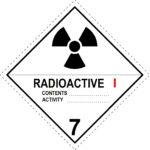
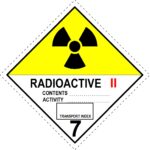
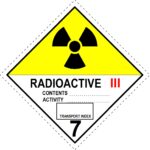
Contact us if you have questions about the transport of radioactive materials. Our Radiation Safety Officer can assist you with your shipment.
Class 8 Corrosive Substances: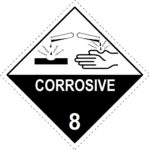
substances which, by chemical action, will cause irreversible damage to the skin or, in the case of leakage will materially damage or even destroy, other goods or the means of transport.
Examples: Battery acids, sulphuric and other acids, sodium hydroxide, potassium hydroxide, mercury, lead acid batteries (i.e. car batteries).
Class 9 substances and articles (miscellaneous dangerous substances and articles):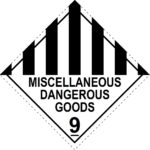
are substances and articles which, during transport present a danger not covered by other classes.
Examples: asbestos, life rafts, self-inflating life jackets, internal combustion engines, vehicles, chemical and first aid kits, dangerous goods in articles, lithium batteries, environmentally hazardous substances.
Environmentally hazardous substances: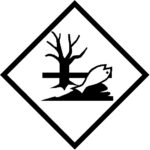
Environmentally hazardous substances (aquatic environment) are those that meet the criteria in 2.9.3 of the UN Model Regulations or that meet criteria in national or international regulations established by the appropriate national authority in the State of origin, transit or destination of the consignment. Substances or mixtures dangerous to the aquatic environment not presenting a danger covered by other classes, must be assigned to packing group III and designated:
- UN 3077 Environmentally hazardous substance, solid, n.o.s.*; or
- UN 3082 Environmentally hazardous substance, liquid, n.o.s.*
Exemptions from the regulations
Air – IATA DGR – Special Provision A197
These substances when transported in single or combination packagings containing a net quantity per single or inner packaging of 5 L or less for liquids or having a net weight per single or inner packaging of 5 kg or less for solids, are not subject to any other provisions of these Regulations provided the packagings meet the general provisions of 5.0.2.4.1, 5.0.2.6.1.1 and 5.0.2.8.
Sea – IMDG – Marine Pollutants 2.10.2.7
Marine Pollutants packaged in single or combination packagings containing a net quantity per single or inner packaging of 5L or less for liquids or having a net mass per single or inner packaging of 5kg or less for solids are not subject to any other provisions of this code relevant to marine pollutants provided the packagings meet the general provisions of 4.1.1.1, 4.1.1.2 and 4.1.1.4 to 4.1.1.8. In the case of marine pollutants also meeting the criteria for inclusion in another hazard class, all provisions of this code relevant to any additional hazards continue to apply.
Road – ADG Code 7.7 Australian Special Provision AU01
Environmentally hazardous substances meeting the descriptions of UN3077 or UN3082 are not subject to the code when transported by road and rail in packagings that do not incorporate a receptacle exceeding 500kg/L, or IBC’s.
Lithium Batteries: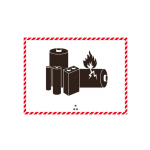
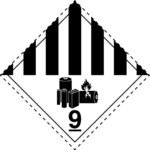
are classified as Class 9 Miscellaneous dangerous goods. Lithium batteries are used in a wide variety of equipment, mobile phones, tablets, laptops, tools and etcetera.
Lithium Ion batteries:
are rechargeable batteries where the lithium is only present in an ionic form in the electrolyte. Also included within the category of lithium-ion batteries are lithium polymer batteries. Lithium-ion batteries are generally used to power devices such as mobile telephones, laptop computers, tablets, power tools and e-bikes.
Lithium Ion Batteries are classified by function of the Watt Hour rating.
Lithium metal batteries:
are generally primary (non-rechargeable) batteries that have lithium metal or lithium compounds as an anode. Also included within lithium metal are lithium alloy batteries. Lithium metal batteries are generally used to power devices such as watches, calculators, cameras, temperature data loggers, car key fobs and defibrillators.
Lithium Metal Batteries are classified by function of the Lithium metal content in the cell/battery.

